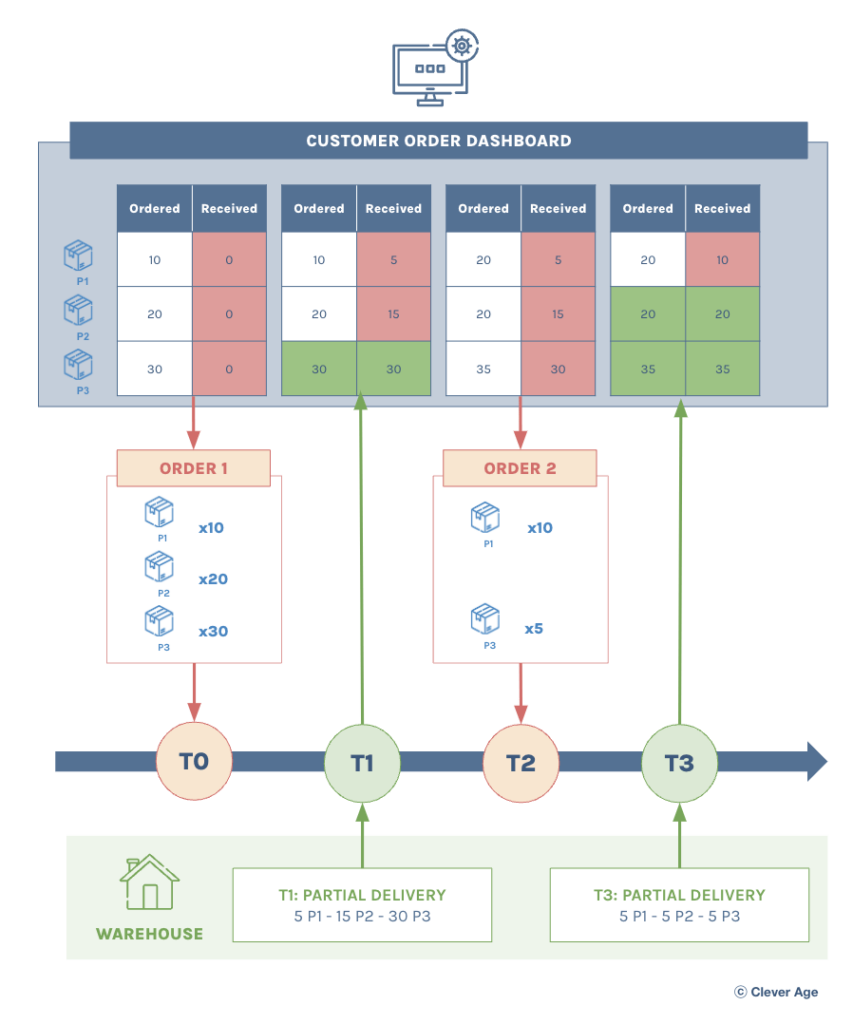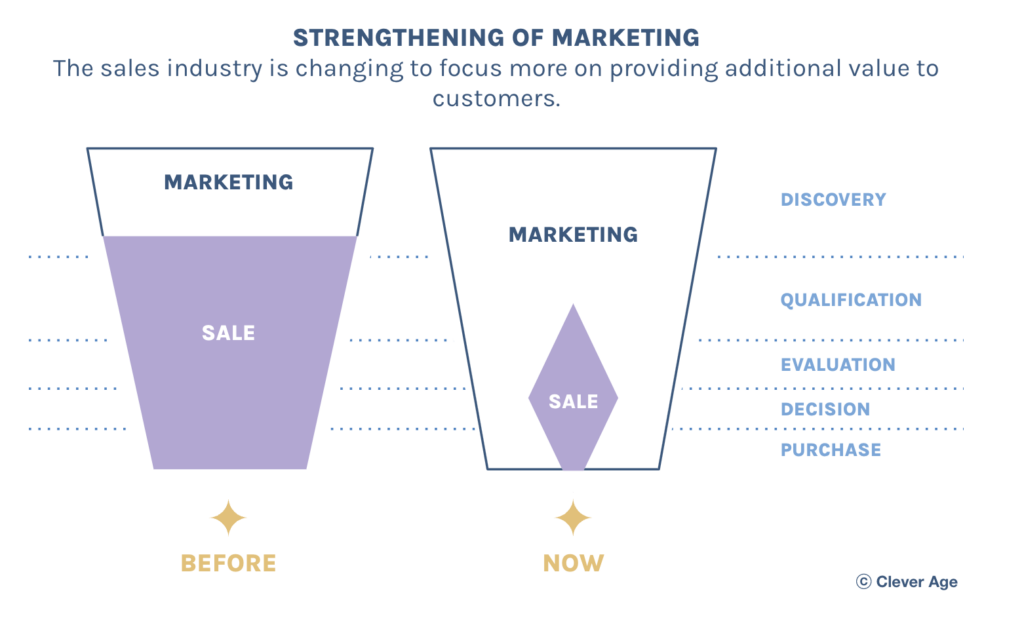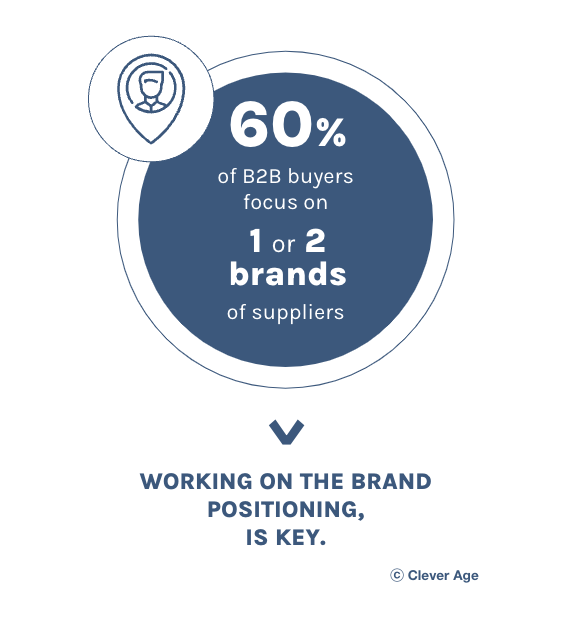INTRODUCTION
In the first article of this series, we discussed the similarities between B2B and B2C, while focusing on contextual elements. This second part is more focused on functional differences and their interpretation depending on the approaches.
E-PROCUREMENT
E-Procurement refers to the provision of a dedicated website, possibly branded with the customer’s image, from an e-commerce platform to its key clients. This website offers all the products previously negotiated between the two parties, at pre-agreed prices.
This is not a white-label solution, but rather a dedicated purchasing site, filtered on a specific catalog, and presenting only the negotiated prices. This type of site is often reserved for large accounts to facilitate internal purchasing.
In theory, e-Procurement could apply to both B2B and B2C, but in practice, only a few large B2B sites offer this option to their customers.

STOCK MANAGEMENT AND DISPLAY
Stock management is often a major challenge for an e-commerce site, whether it is B2B or B2C. There are numerous strategies, all of which respond to either commercial challenges or operational challenges:
- Selling out of stock or not
- Stocks dedicated or not to e-commerce, stocks shared between e-commerce and other sales channels
- Displayed or non-displayed stocks, stock level indicators
- Calculated delivery times, sometimes calculated based on production schedules (see below)
The most important criteria is the reliability of delivery times: an issue that is just as important in B2B as it is in B2C, but which is often managed differently.
A STRONG DEPENDENCY WITH MANUFACTURING
The link between an e-commerce platform and manufacturing or production management is only relevant in the particular case of a b2b seller who manufactures all or part of products sold on its e-commerce platform.
PRODUCTION PLANNING DEPENDENCY
Most e-commerce sites require stock management, which can sometimes be very advanced. But in the case of a manufacturer, production planning is added to stock management:
- The availability of a product on the site or the delivery time of that product is conditioned by both the state of the stocks and the production plan.
- The order of a product can have an impact on stock management, of course, but can also generate a change in the production plan (e.g., a manufacturing order associated with an order).
As a result, calculating the delivery times displayed to the end customer on the e-commerce platform can sometimes be relatively complex. In addition, an e-commerce order can directly impact the production plan.
In some industries, there are also challenges with partial deliveries that will be made from existing stock, products already scheduled for production, and products to be scheduled following new orders.
In the end, stock management, or rather supply lead time management, even if it can be complex in B2C, can become a nightmare for a B2B seller who is also a manufacturer.

THE COST OF RAW MATERIALS
While rare, this scenario can become inevitable when a manufacturer uses raw materials with highly volatile prices that significantly impact product costs. For example, this may be the case for cable manufacturers whose copper makes up a significant portion of manufacturing costs and is subject to a highly volatile market.
As a result, the entire price calculation mechanism is affected by the introduction of a “last-minute” variable, which is the cost of the raw material at the time of order placement. Given that we are dealing with B2B pricing, which is often the subject of negotiated contracts and can be complex to calculate, determining and displaying prices on an e-commerce platform becomes a critical challenge.
DELIVERY ROUTES
Logistics associated with the delivery of goods are always a point of optimization, whether for a manufacturer, wholesaler, or distributor. While this is also true for B2C sites, the advantage of B2B merchants in this regard is their smaller customer base, which often means that delivery addresses are known in advance. Moreover, in the case of B2B, it is not uncommon for the seller to have warehouses dispersed throughout their geographical area. The combination of all these elements can result in the highly optimized management of deliveries through “delivery rounds.
ON-SITE SOURCING
When catering to certain types of B2B customers, like craftsmen, it’s crucial to provide dedicated features. One such example is the use of multiple carts, which may be referred to as job site management, multiple lists, or other variations, but always with the same functionality:
- Users can save multiple carts
- They can name their carts
- They can order or delete carts over time, with carts persisting in the long term
This need typically arises when a distributor website sells to craftsmen or installers. They create a cart to address the specific needs of a customer, such as a construction site, which then serves as a quote source for presenting to the final customer. After the quote is signed, the cart is either deleted or ordered accordingly.
While this mechanism is more common in B2B, it can also be found on mixed typology sites that cater to both B2C and B2B customers.
AN E-COMMERCE WEBSITE THAT ALSO AIMS ON COMMUNICATION
Communication and content are essential elements in the case of a B2C website, both to help with SEO and to convey a marketing positioning in support of sales.
The same needs are found in the case of a B2B website that sells on a B2C model or on a mixed model (see part 1 on sales model typologies). However, for distributor/wholesaler or manufacturer sites, the approach is different. The need for communication can be very important but may not necessarily serve the same objectives:
- Institutional communication (especially for publicly traded companies)
- Press areas
- Marketing communication
- …
Thus, strong content management needs are present in both B2C and B2B models but sometimes aim to serve very different objectives. As a result, the solutions provided will also potentially be very different, sometimes involving specific functionalities (such as a GED, for example).
ORDERING, SHIPPING, AND BILLING
In part 1 of this article, we discussed the strong recurrence associated with B2B sales models. Therefore, in B2B, there are scenarios where customers will order a product multiple times at different intervals, either for their own needs (replenishment on high turnover rates) or to fulfill orders for their clients (typically “construction” orders). Deliveries in response to these orders will also be spread over time but may be delivered in multiple shipments or simply partially delivered, depending on the availability of supplies or commercial strategy (some customers may be prioritized over others).
To allow customers to effectively track their orders, it becomes necessary to offer appropriate visualization reports, such as a view that quickly identifies for a given product, the quantities and expected delivery dates: the traditional “order tracking” view is no longer relevant.

This type of functionality is most often specific to B2B needs and is therefore an important element to consider when choosing a solution. These functionalities are often directly derived from the exposure of ERPs through extranet solutions.
EXTRANET FUNCTIONAL REQUIREMENTS
The e-commerce path taken by B2B and B2C sellers has sometimes been very different: among B2B e-commerce sites, many were in fact an extranet extension of the company’s ERP. It would be easy to think that the simplicity of implementation was the reason for such choices, but the reality is often a bit more complex: customers in B2B e-commerce site also need more advanced functionalities than those traditionally offered by B2C e-commerce solutions. Among these functionalities, we find:
- Quotation management (a functionality now addressed by several B2B e-commerce platforms)
- Backorder presentation (such as the view of ordered products as described in the previous paragraph)
- A summary of the customer’s outstanding balance
- GED functionalities associated with the customer account (for example, to manage signed contracts)
- EDI (or WebEDI) functionalities
- E-Procurement, Punchout
- …
These functionalities, often derived from an extranet exposure of the ERP, are now included in some B2B-oriented e-commerce platforms. However, a good part of them still require specific developments to be integrated to an e-commerce solution.
SOMETIMES COMPLEX CUSTOMER ORGANIZATIONS IN B2B
Another major difference between B2C and B2B is precisely based on the difference in customer typology.
CUSTOMER ACCOUNTS AND CONTACTS
In B2B, the customer is primarily a legal entity: the company to whom the order will be invoiced. However, a legal entity does not have fingers (most of the time), so it is a human being who sits behind the keyboard to create the cart and process the payment. The common designations are:
- Customer account: refers to the legal entity
- Contact: a physical person associated with this legal entity. Often, contacts are associated with various access rights (price viewing, basket creation rights, order placement rights, etc.).
This difference in user and customer types is obviously one of the major differences between B2B and B2C e-commerce sites.
GROUPS, SUBSIDIARIES, PURCHASING CENTERS…
Beyond the Legal entity/Contact pair, some B2B markets address even more specific customers such as groups, purchasing centers, multiple entities (groups/subsidiaries).
This type of structure requires the ability for an e-commerce platform to manage a hierarchy of customers rather than just the association of contacts to a legal entity. For example, some needs require that:
- A parent company can place orders for its subsidiaries
- An order from a member of a purchasing center is invoiced initially to the purchasing center rather than to the company itself

SPECIFIC FUNCTIONALITIES
Whether it is for B2C or B2B, each has specific functionalities, even if the boundaries are not as clear-cut as they may seem. For example:
- Quotation management: quotation management is widely used when a customer places an order for a high amount of products in order to receive a personalized commercial offer. It is also essential when prices involve a quotation request (such as an installation service, for example). Originally deployed in B2B, it is now appearing in some B2C cases such as the sale of services.
- Loyalty points management and more generally loyalty processes: this type of functionality is still mostly intended for B2C, but trends suggest that it is slowly making its way on B2B websites.
- Gift cards: this is a functionality exclusively for B2C that will probably never extend to B2B.
CLEVER AGE’S OPINION
This article aims to introduce a comparative analysis of B2B e-commerce and B2C e-commerce and focuses on some important functionalities or contexts on which the two sales models differ.
These differences are sometimes major and strongly influence the choice of an e-commerce solution to support your online sales. However, despite those significant differences, the trend that started a few years ago is becoming more and more pronounced: B2B sales models are getting closer and closer to B2C models by drawing inspiration from them where it seems relevant.

Beyond these purely behavioral explanations, there is also a significant evolution in marketing approach in B2B. Until now, marketing had been largely neglected in favor of sales forces, but the marketing department in B2B is also becoming increasingly important, just as it is for B2C.

In short, B2B is no longer lagging behind and is now drawing on the best of B2C to better integrate it into its strategy. It strives to pamper its customers to better retain them:

In short, B2B is no longer lagging behind and is now drawing on the best of B2C to better integrate it into its strategy. It strives to pamper its customers to better retain them:
And E-commerce solution vendors have understood this well. The fact that the B2B market is significantly larger than the B2C market and that the B2C & B2B models have many similarities has prompted many vendors to expand the functional coverage of their B2C ecommerce solutions to offer a B2B approach. And that’s not to mention the few vendors who have decided to focus exclusively on B2B.
In the following parts of this series, we will focus more on these major differences and in particular on the technical impact they may have.



